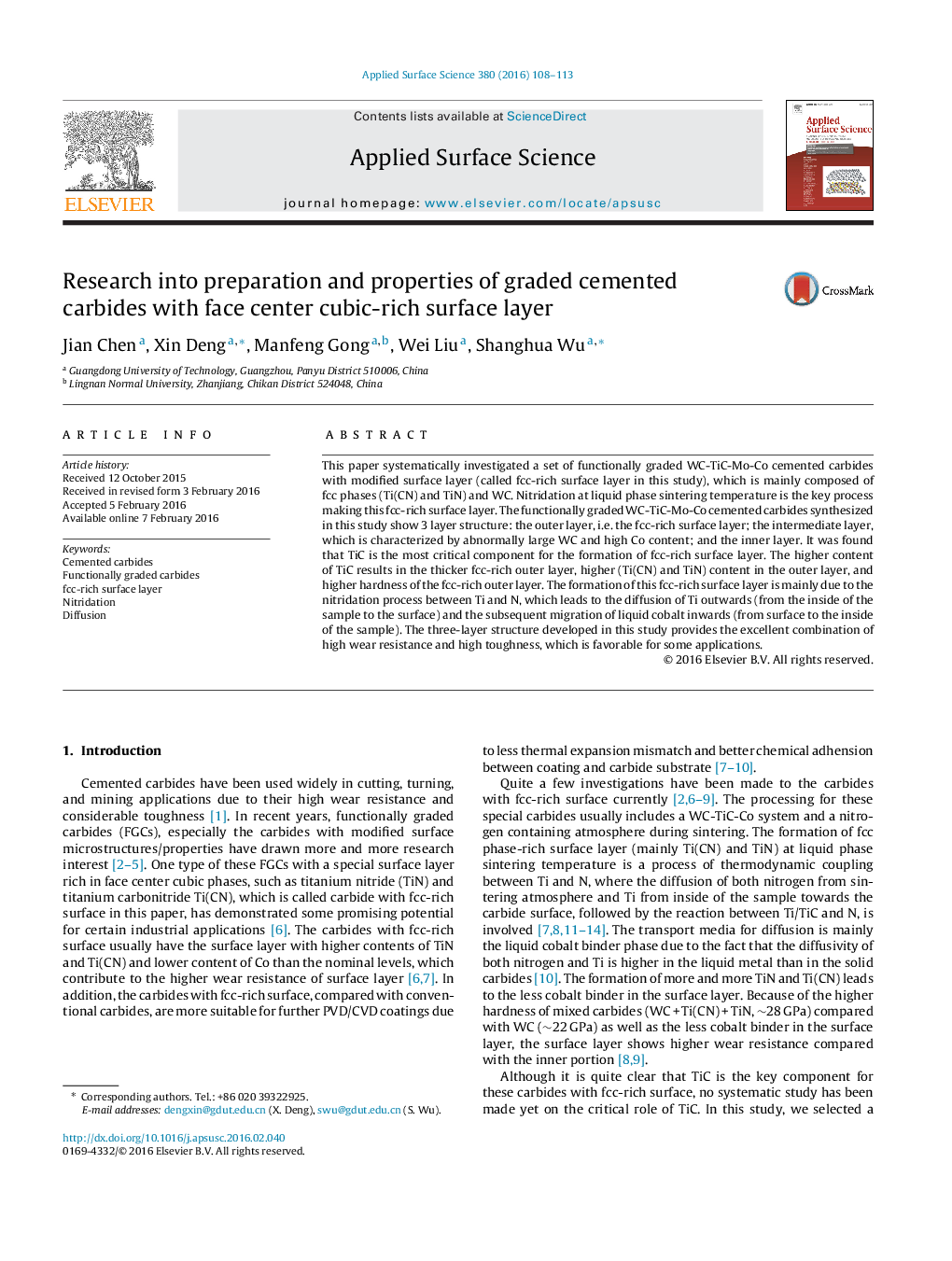| Article ID | Journal | Published Year | Pages | File Type |
|---|---|---|---|---|
| 5348640 | Applied Surface Science | 2016 | 6 Pages |
Abstract
This paper systematically investigated a set of functionally graded WC-TiC-Mo-Co cemented carbides with modified surface layer (called fcc-rich surface layer in this study), which is mainly composed of fcc phases (Ti(CN) and TiN) and WC. Nitridation at liquid phase sintering temperature is the key process making this fcc-rich surface layer. The functionally graded WC-TiC-Mo-Co cemented carbides synthesized in this study show 3 layer structure: the outer layer, i.e. the fcc-rich surface layer; the intermediate layer, which is characterized by abnormally large WC and high Co content; and the inner layer. It was found that TiC is the most critical component for the formation of fcc-rich surface layer. The higher content of TiC results in the thicker fcc-rich outer layer, higher (Ti(CN) and TiN) content in the outer layer, and higher hardness of the fcc-rich outer layer. The formation of this fcc-rich surface layer is mainly due to the nitridation process between Ti and N, which leads to the diffusion of Ti outwards (from the inside of the sample to the surface) and the subsequent migration of liquid cobalt inwards (from surface to the inside of the sample). The three-layer structure developed in this study provides the excellent combination of high wear resistance and high toughness, which is favorable for some applications.
Related Topics
Physical Sciences and Engineering
Chemistry
Physical and Theoretical Chemistry
Authors
Jian Chen, Xin Deng, Manfeng Gong, Wei Liu, Shanghua Wu,
